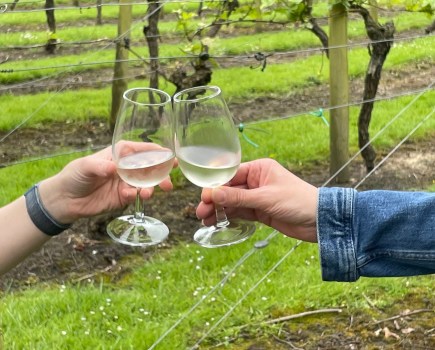Most consumers are unable to taste what’s inside the bottle prior to purchase. It is often the brand alone that drives sales, distinguishes a product and acts as an indication of quality. As one of their most valuable assets, it is no surprise to see English wine producers investing considerable sums in promoting their brand.
Yet, when we reviewed the trade mark register, we found widespread under-investment in the legal protection of brand assets. Of the UK’s 19 largest wine producers, we found:
31% had no registered trade mark protection at all.
63% had no registered trade mark protection outside the UK.
Where registrations did exist, their scope was frequently limited to “wine” and failed to cover other business activities.
89% had no registered design right protection.
Here we set out five reasons why now is the time to invest in the legal protection of your brand:
Copycats, counterfeiters
and infringers
As the English wine industry continues to boom, the incentive for third parties to counterfeit increases exponentially. Proper investment in brand protection is imperative – especially in the development of a portfolio of trade mark and design registrations which comprehensively cover the business’s core commercial activities. Without these registrations, there may be little or nothing that you can do to stop infringers or copycats.
The growing export market
WineGB estimates that exports will be worth £350m by 2040. As a result, registered trade mark protection in each key export jurisdiction should be high on the agenda.
The application date is important and a failure to act quickly can be fatal. The practice of ‘trade mark squatters’ filing similar marks overseas before the brand-owner has done so is, unfortunately, not uncommon (especially in countries such as China). When this happens, it is a difficult, expensive, and sometimes insurmountable hurdle to overcome – especially as you may not have a protectable reputation or other unregistered rights in that country to rely on.
New forms of brand protection
In January 2019, new legislation came into effect that introduced new types of UK trade mark protection. You now have the opportunity to obtain registered protection for:
υ Position marks – for example, the position of a coloured band on bottles.
υ Patterns – for example, a distinctive pattern embossed on sparkling wine foil.
υ Holograms – for example, an anti-fraud measure on a gift box.
Market consolidation
Commentators are forecasting an increase in M&A activity in the industry, driven by market consolidation (with well-funded producers looking at strategic acquisitions) and the entry of new players (e.g. the large alcoholic beverage companies wanting a foothold in this space).
A very significant portion of the purchaser’s valuation is likely to lie in the brand, so don’t be surprised if the purchase price takes a major hit if the purchaser discovers intellectual property issues during its due diligence. If you have ambitions to exit, now is an ideal time to fix legal issues that have been addressed loosely or informally, such as ownership of IP created by third parties or gaps in brand protection.
Diversification
In recent years, several wine producers have diversified into ancillary products (such as other alcoholic drinks like gins and vodkas), services (such as hotels and hospitality services) and merchandise (such as clothing). Remember, brand protection does not automatically follow. It must be regularly reviewed and updated to ensure it keeps pace with the latest activities of the business.



